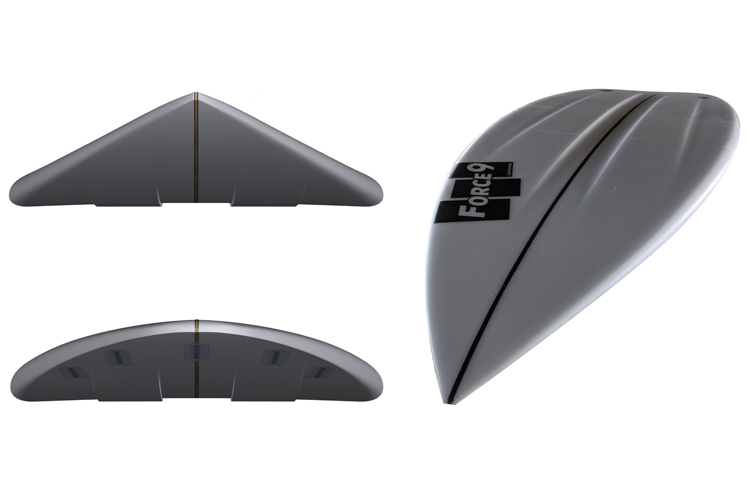
There are no limits to surfboard shaping. Ultimately, you can end up with a craft that only excels in very particular conditions.
One of the most experimented fields in surfboard design has been the introduction of multiple formulas for optimizing water displacement via bottom contour and channels.
The science behind fundamental surfboard bottom contours has already been studied and tested.
However, few innovative add-ons have broken through into the mass market.
Force 9, a surfboard shaping company founded in 1982 in Cronulla, Australia, and led by Jim Lucas, has just dared to challenge the paradigm.
The brand created and patented a parallel longitudinal bottom contour that enhances water flow through the board’s underside.
The uniqueness of the design lies in the parallel and offset contours to the bottom curve and the overall shape of the surface.

Negative Is Positive Is Negative
According to Force 9, this is a dual-rocker, multi-channel hybrid bottom design.
In a document shared with SurferToday, we get to know that “the two rockers are defined by the difference between the rocker of a board with a flat bottom, and the rocker of the same board with a current single concave bottomed board.”
“The rockers are expressed through a (variable) number of channels.”
“The depth of those channels at any point on the board is the difference between the flat bottom and the concave.
“As a result, the channels run almost the full length of the board – fading in and out as the rockers get closer to each other (particularly at the rails, nose, and tail).”
“The center of the board is negative in profile (i.e., channeled), as are the rails. The positive profile (ridges) are placed out from the center, with the stringer being the symmetry point of the geometry.”

More Float and Flow
Jim Lucas told SurferToday that “testing has proved extremely positive, even though some trained eyes could have a problem coming to terms with the multi-dimensional concept.”
But how does that translate into the real surf? What kind of performance can we expect from this dual-rocker, multi-channel hybrid bottom design?
Force 9 says the bold template results in a board that provides more float and flow than a standard concave-bottomed board when moving slowly.
Also, it will display greater speed, acceleration, and grip as the board moves quickly.
Lastly, the Australian surfboard company notes that the greater grip is easily controlled as the channels taper through the tail (where most turning is undertaken), while the positive profile aids in rail-to-rail transition in the middle part of the board.
Time to give it a try, right?
Words by Luís MP | Founder of SurferToday.com


Leave a Reply